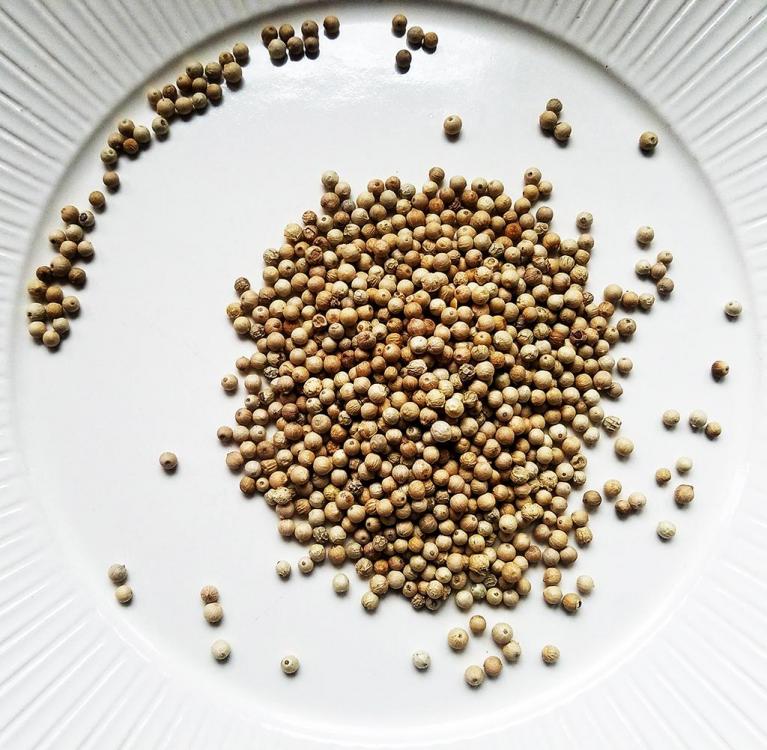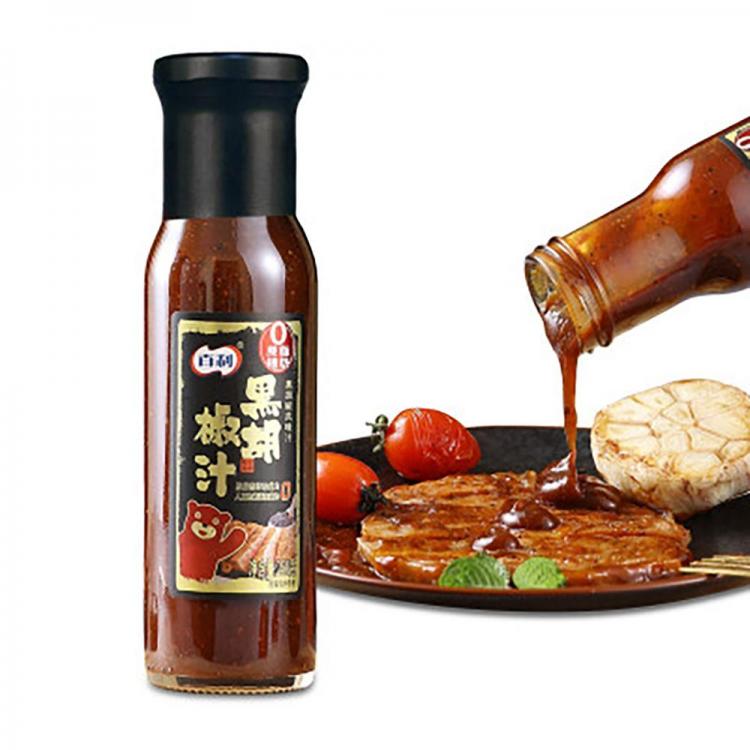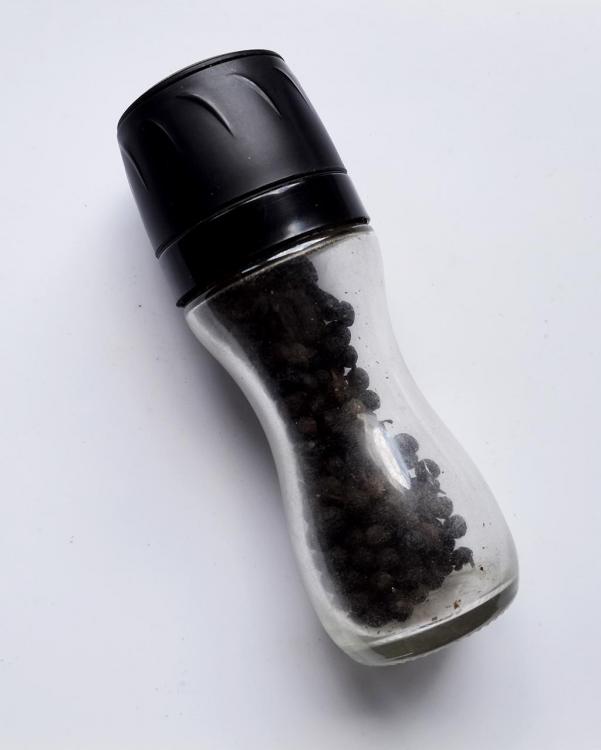6. Pepper – 胡椒 (hú jiāo) - Piper nigrum
I suppose I should mention common pepper. Both black and white pepper are available. However, white pepper is by far the most commonly used in Chinese cuisine. The ‘hot’ in traditional ‘hot and sour soup’’ is from white pepper, not chilli. After all, chilli is a relatively new ingredient to Asia having been introduced by the Portuguese in the 16th century, but not immediately being adopted. That didn't happen until the 18th century. Pepper was introduced from Kerala, India to which it is native, over two millennia ago. The Chinese name 胡椒 (hú jiāo), literally means ‘foreign pepper’.
White Pepper
白胡椒 (bái hú jiāo), white pepper, the dried ripe seed of the plant, is sold everywhere, either as whole seeds or, for the terminally lazy and clueless, pre-ground. It is the go-to pepper for all Chinese cuisine, being used in every part of China. That said, it isn’t added to every savoury dish to the extent we do in the west. It, too, is in many five-spice powders. You are never going to see salt and pepper on a Chinese dining table.
Black pepper
黑胡椒 (hēi hú jiāo), black pepper, made from the cooked unripe fruit which is then dried, used to be rather difficult to source, but today it is in most larger supermarkets in the cities, again whole corns or pre-ground. In the countryside or small towns, forget about it. It is mainly used in foreign dishes and everyone knows that the only sauce foreigners know how to make is the black pepper sauce lathered over every steak – the only meat foreigners eat. They also pour the same sauce over pasta and call it Italian! Jars of the revolting concoction are available in some supermarkets.
Criminal Offence!
Many years ago, I bought both types of pepper in these grinders. I've never bought them that way since. I just keep refilling them from small (30g / 1oz) bags which I buy regularly.
Illegitimi non carborundum








